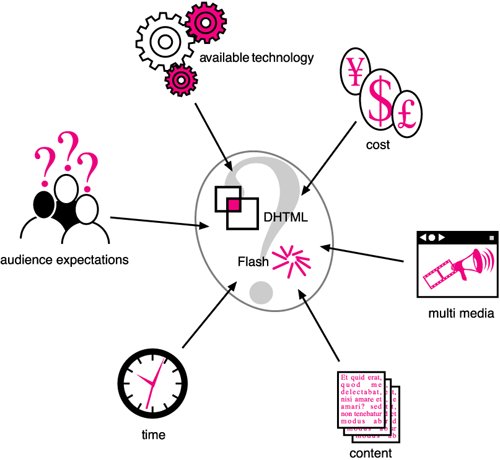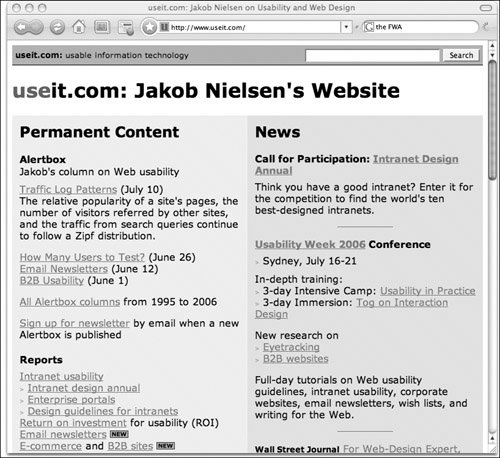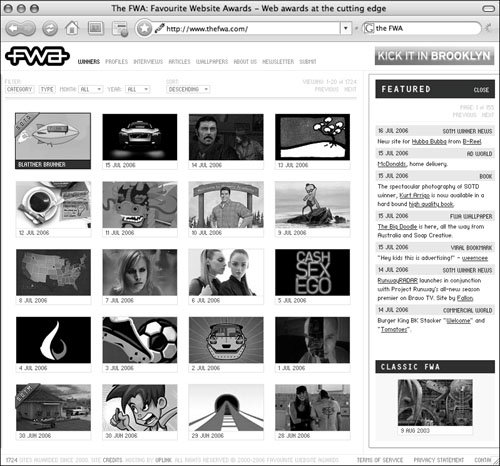| Although I'm biased on this topic, I appreciate the simplicity that DHTML offers Web designers. Which technology you select, however, depends on a variety of factors (Figure 11.6). Ask yourself the following questions when determining which technology better satisfies your user interface needs: Figure 11.6. These are the factors to consider in deciding whether to use Flash or DHTML. 
What technology will my audience have? Will they have DHTML-capable browsers? Will they have the current Flash plug-in installed? Do they have plug-in phobia? The first rule of design is "Know your audience." How much money do I have budgeted? Unlike DHTML, which has no added costs over HTML, Flash requires that you purchase Flash-creation software. These programs can cost several hundred dollars, not to mention the cost of training. Do I need to use sound, animation, or other media on my site? Flash is often better than DHTML for creating and presenting multimedia content. However with the rise of Ajax (see Part 3 of this book) the gap between them is closing quickly. Am I presenting a lot of text? HTML and DHTML are more versatile for presenting large amounts of text. Although Flash has made great strides in its print capability, it still can't hold a candle to HTML. In addition, text in Flash files is not crawlable by search engine spiders and tends to reduce the ranking of those pages in search engines. How much development and maintenance time do I have? Generally, DHTML is faster to create, but this depends on which technology you know better. What are my audience's expectations? If they want fireworks, Flash is the way to go. If they expect a straightforward site or do not like plug-ins, DHTML is the way to go. Again, though, with the development of Ajax systems, there is a lot of cool stuff you can do with DHTML to create interactive experiences that surpass those available with Flash.
The Great Usability Debate Noted Web usability guru Jakob Nielsen takes a strong position against Flash on his Web site useit.com (Figure 11.7). In his essay "Flash: 99% Bad" (useit.com/alertbox/20001029.html), Nielsen comments that Flash designs have a tendency to break with established Web design conventions, which can lead to confusion for viewers. Figure 11.7. Jakob Nielson's useit.com. 
Since he published this article in October of 2000, Macromedia and now Adobe have tried to work with Nielson to remedy the usability problems of Flash. Adobe currently hosts a Usability Topic Center Web site (Figure 11.8) to help Flash developers. Figure 11.8. Adobe's Usability Topic Center (adobe.com/devnet/topics/usability.html). 
Despite the fact that this site includes an article titled "Flash 99% Good," by Kevin Airgrid, Nielson still listed Flash third in his list of Top 10 Design Mistakes of 2005, saying "I view it as a personal failure that Flash collected the bronze medal for annoyance." Obviously if they were not appealing, Flash Web sites would have disappeared a long time ago. However, sites like The Favourite Website Awards present a different Flash site every day (Figure 11.9) and most entertainment Web sites include at least some Flash. The debate continues. Figure 11.9. The FWA: Favourite Website Awards (thefwa.com). 
|
|



